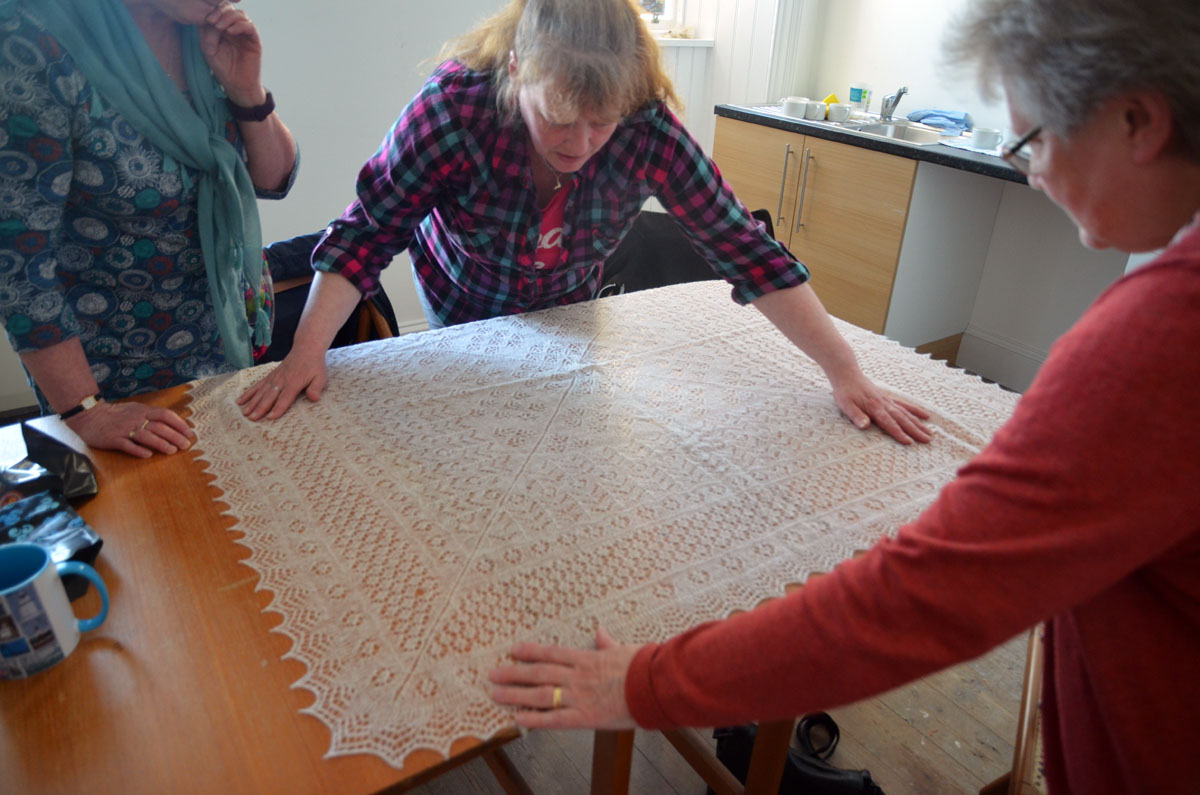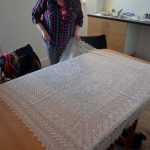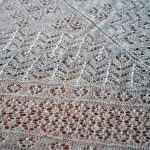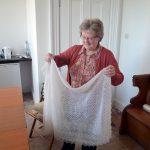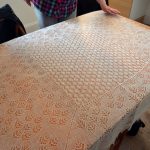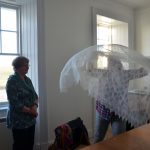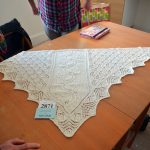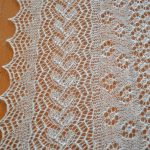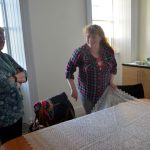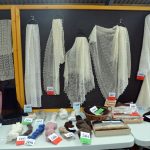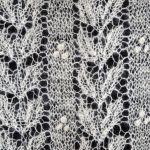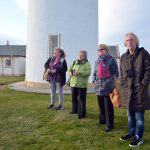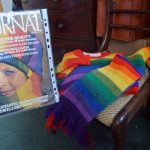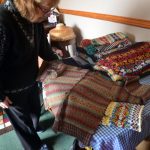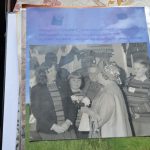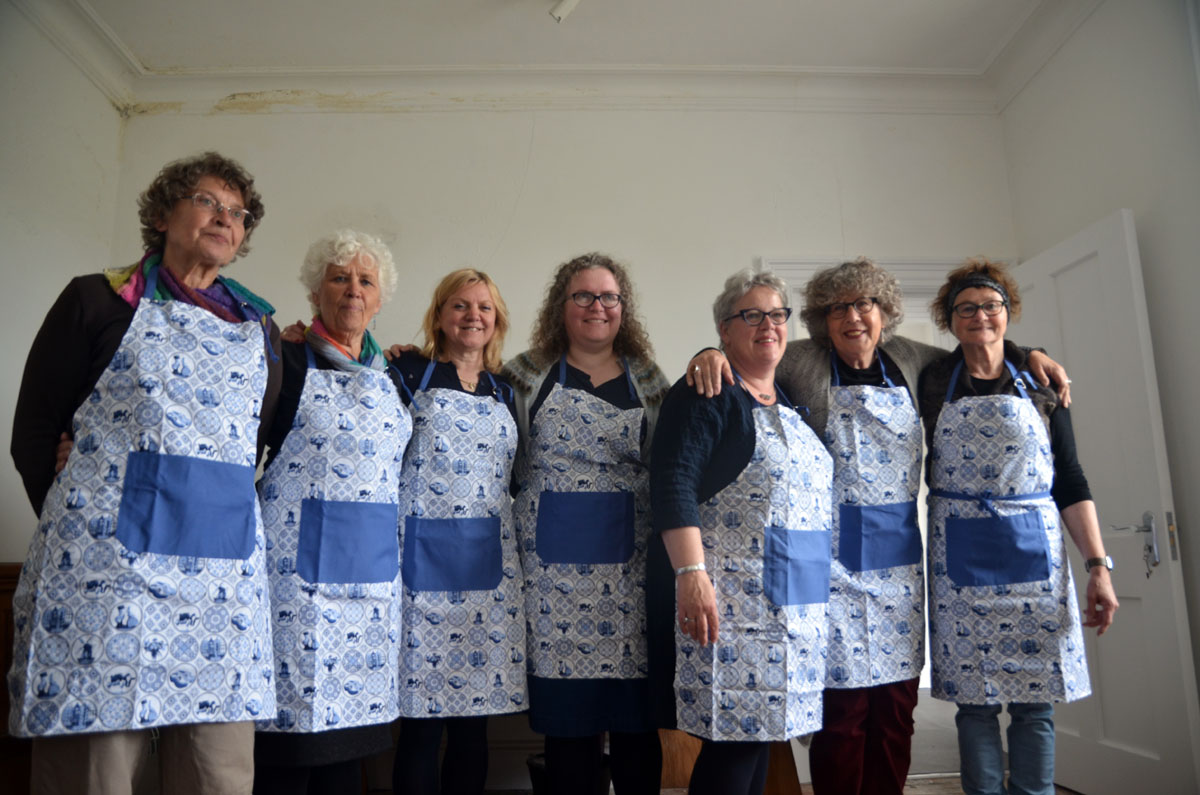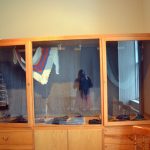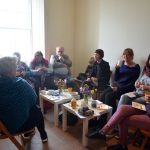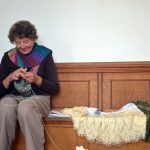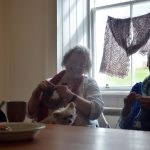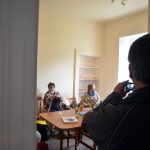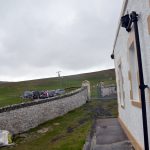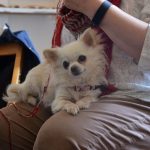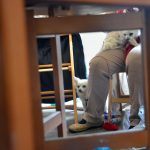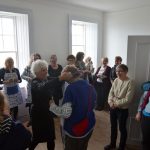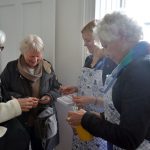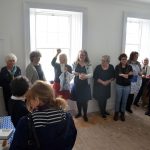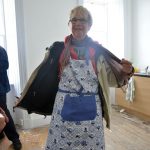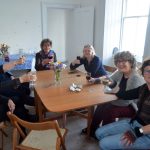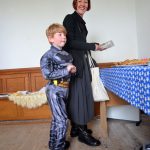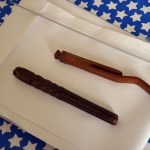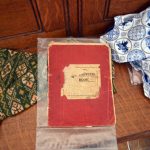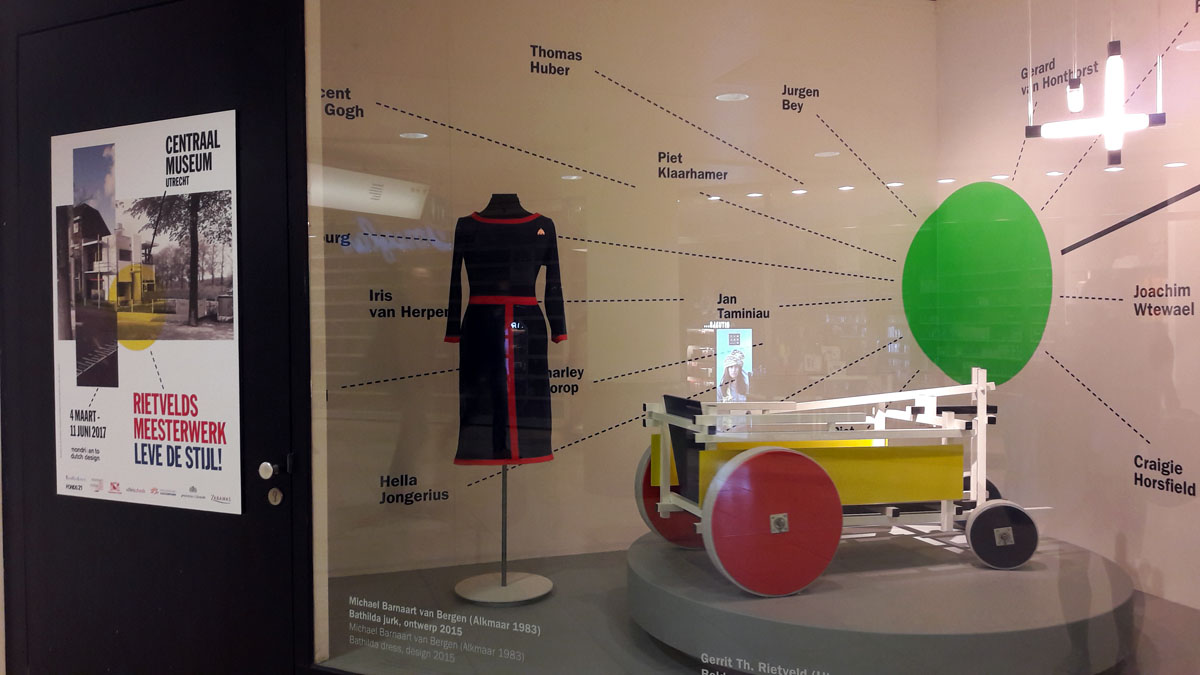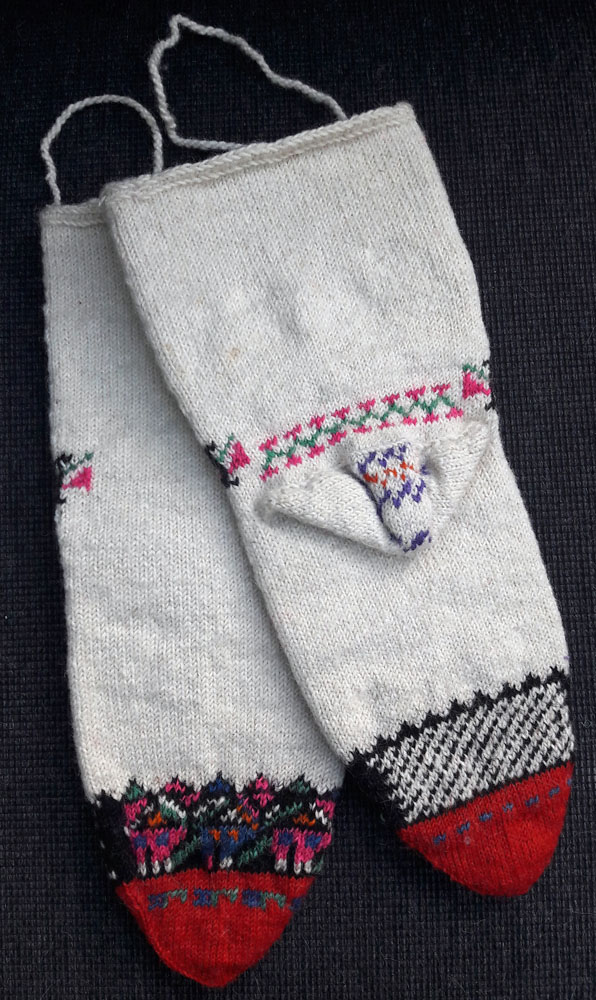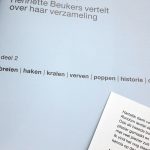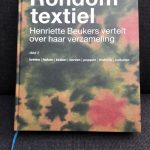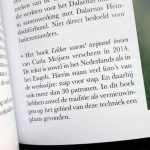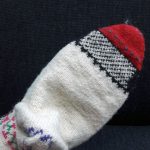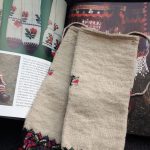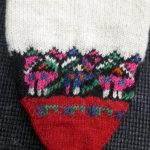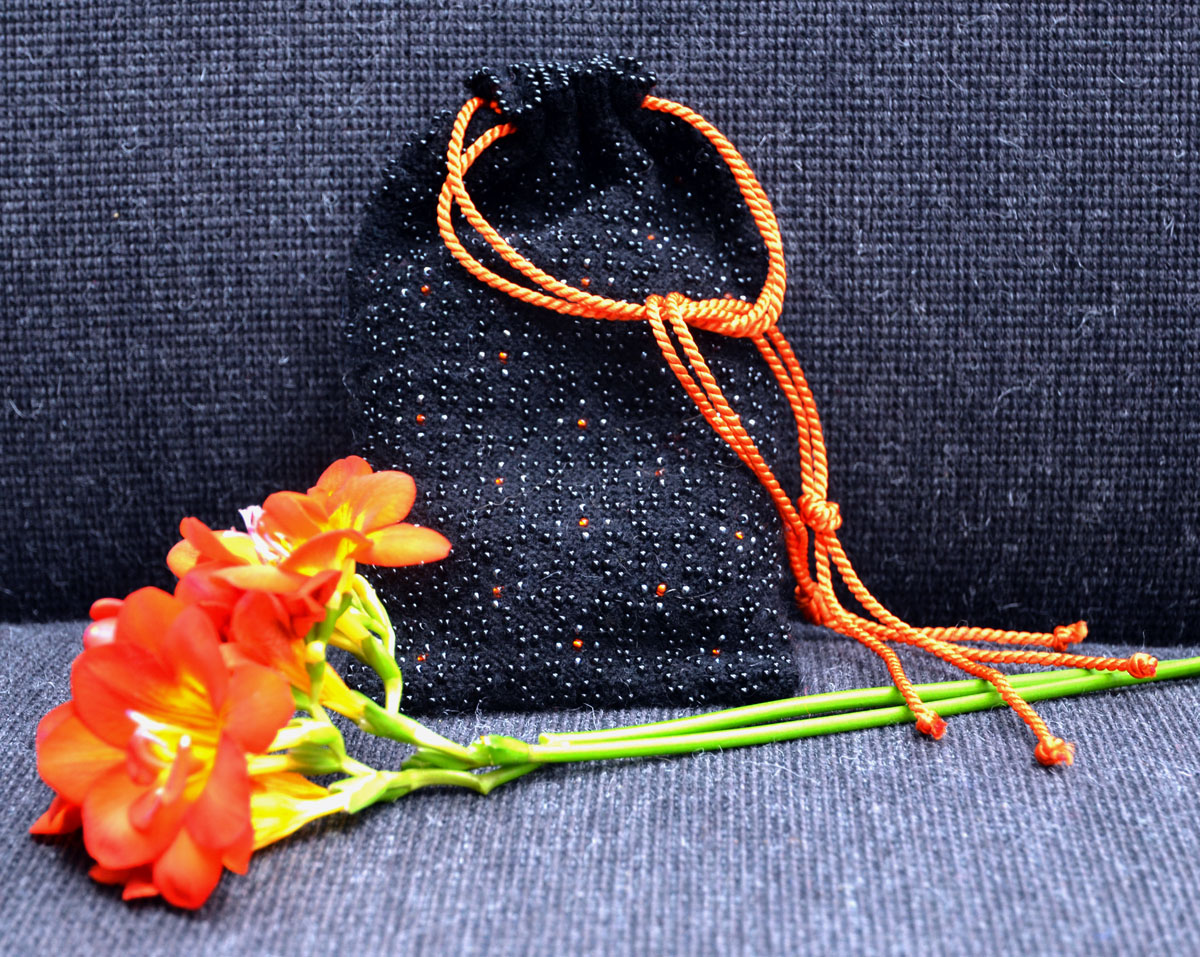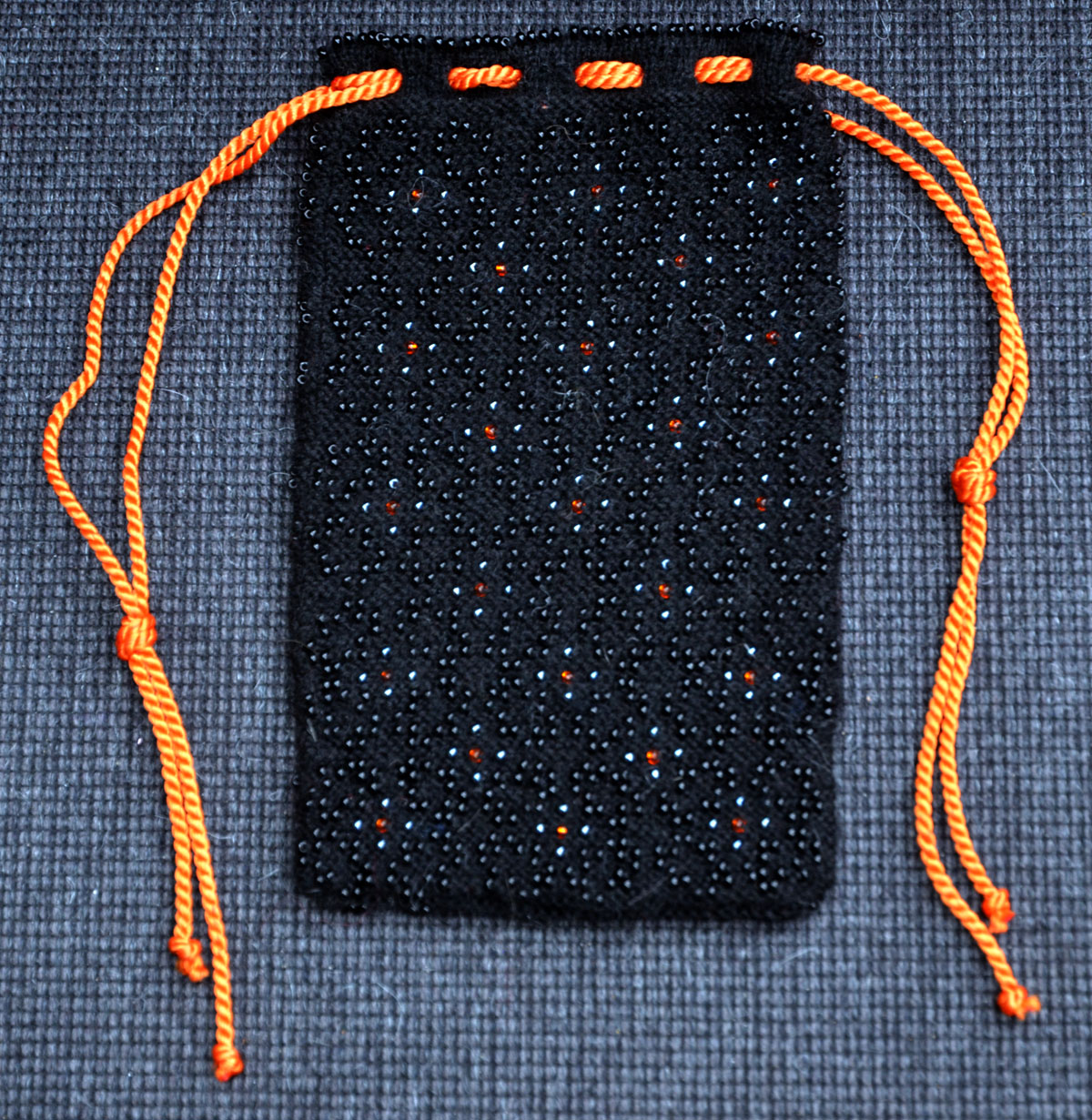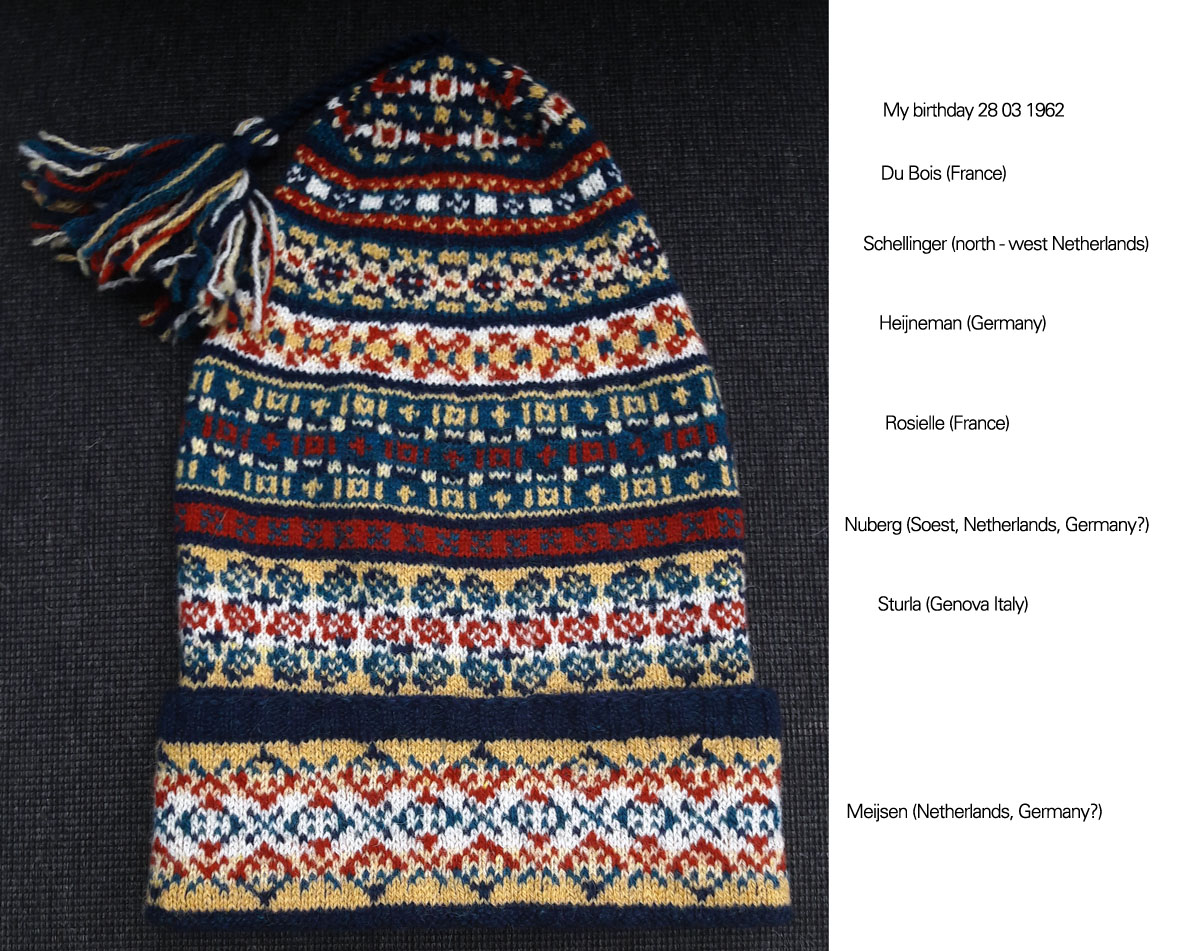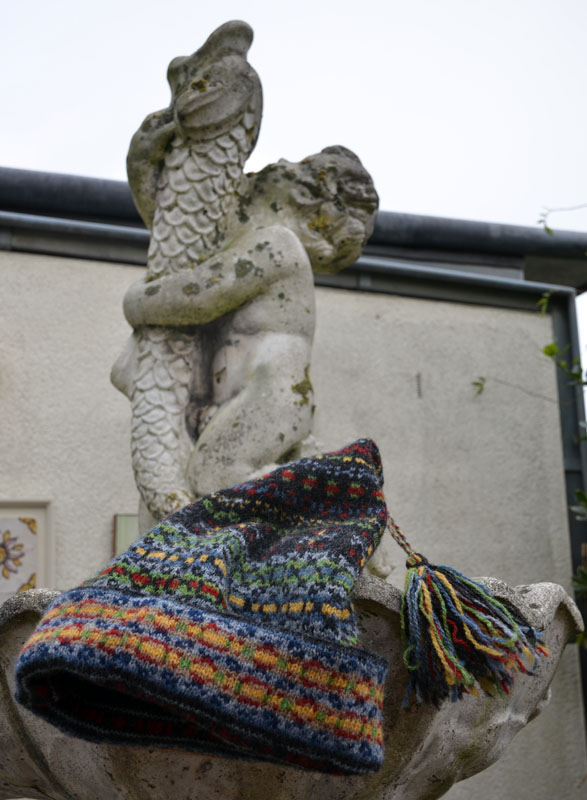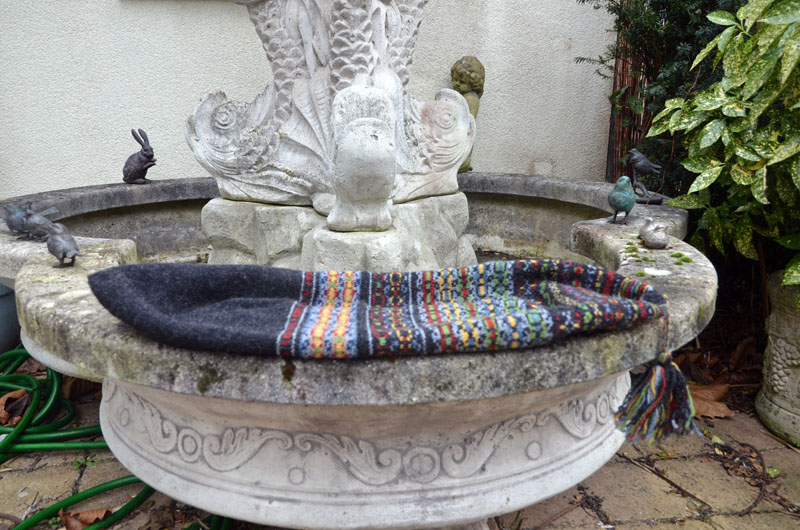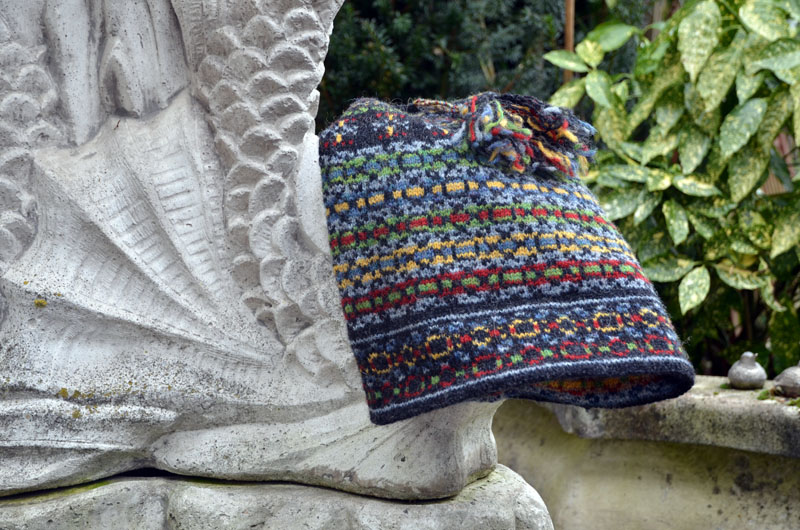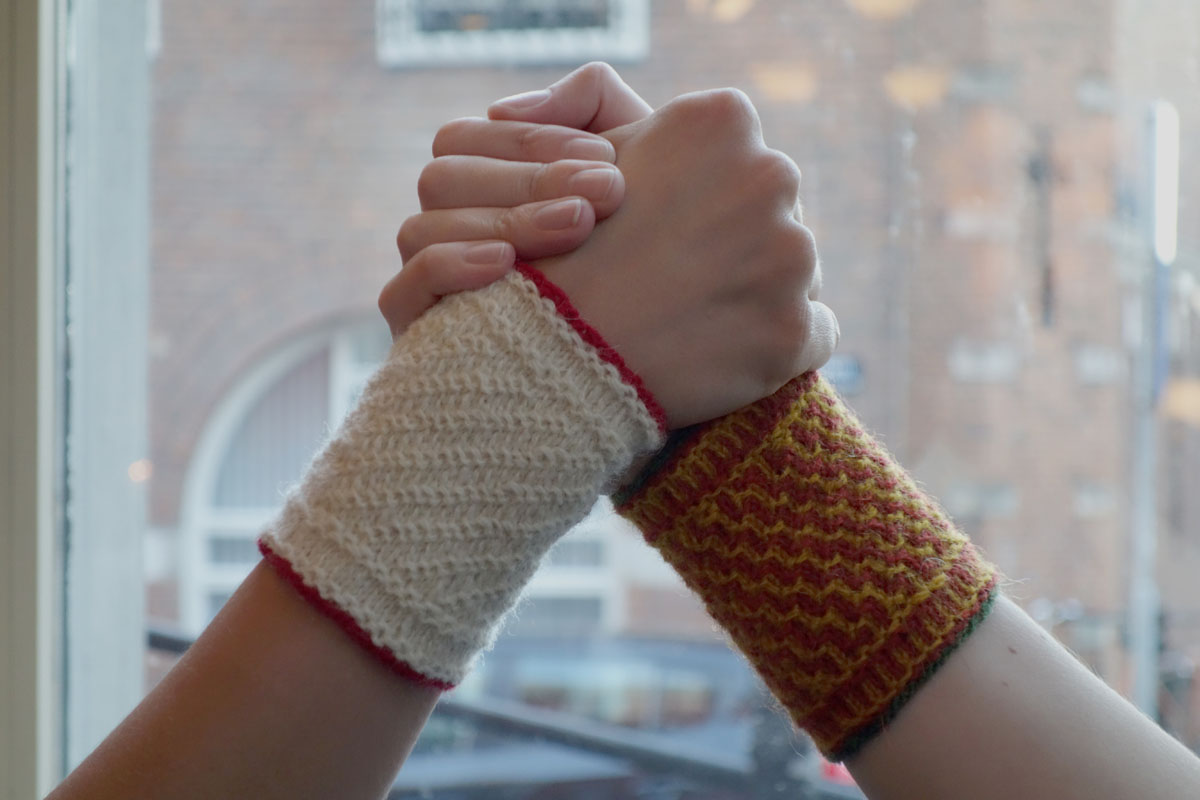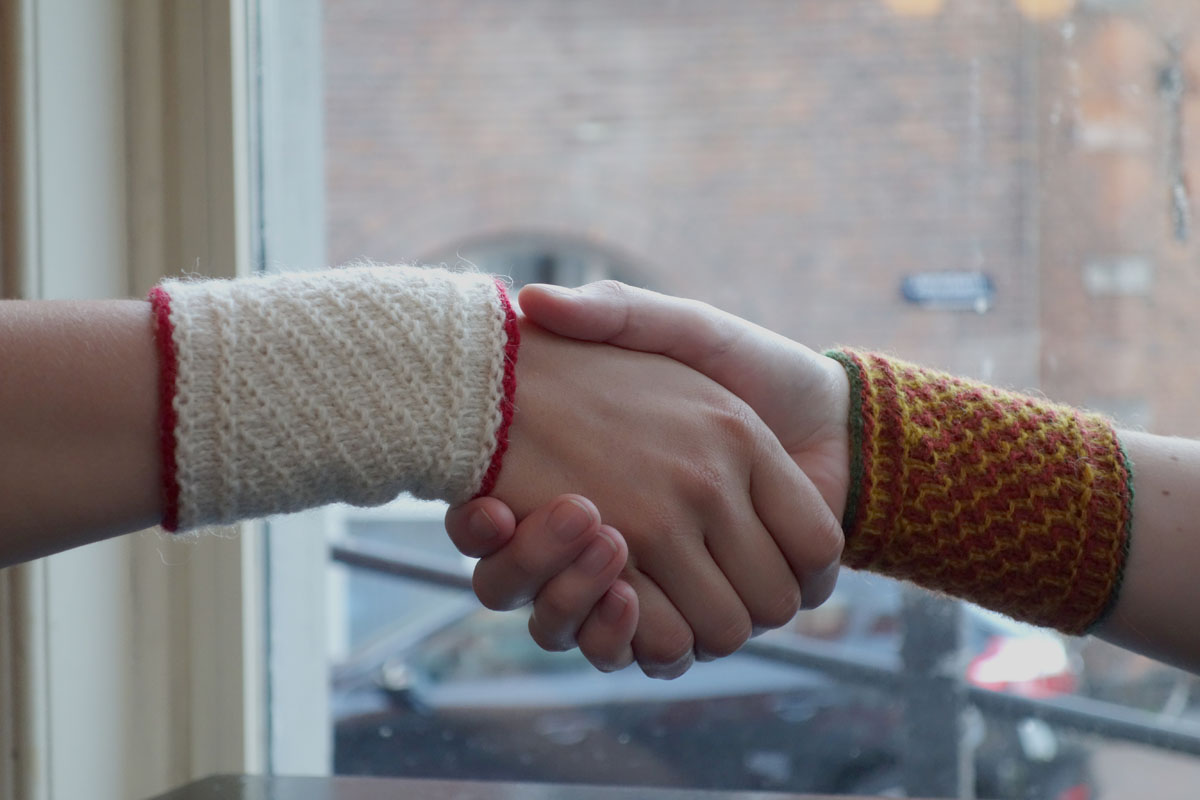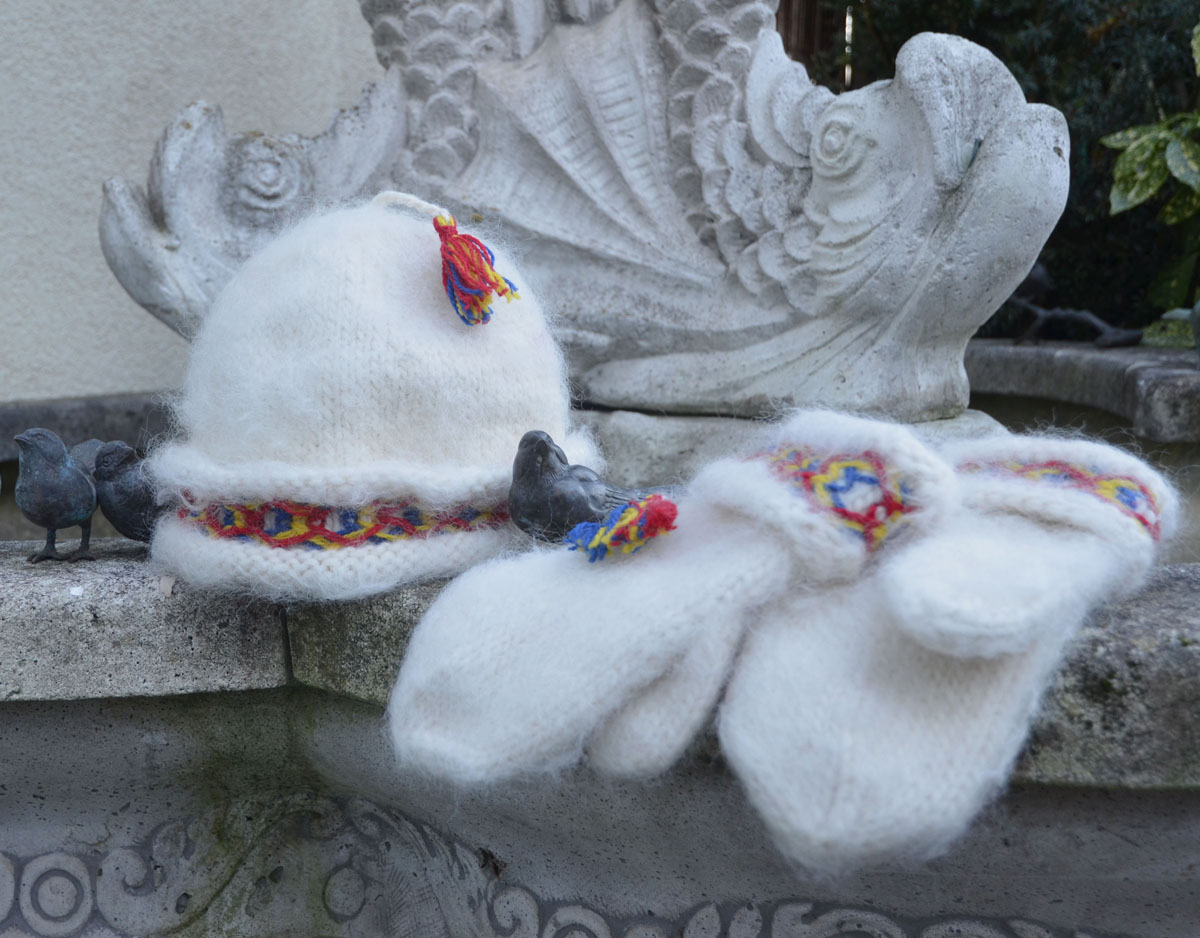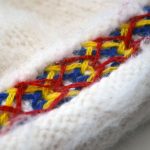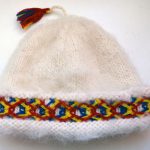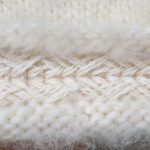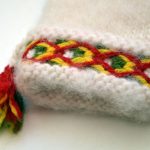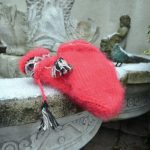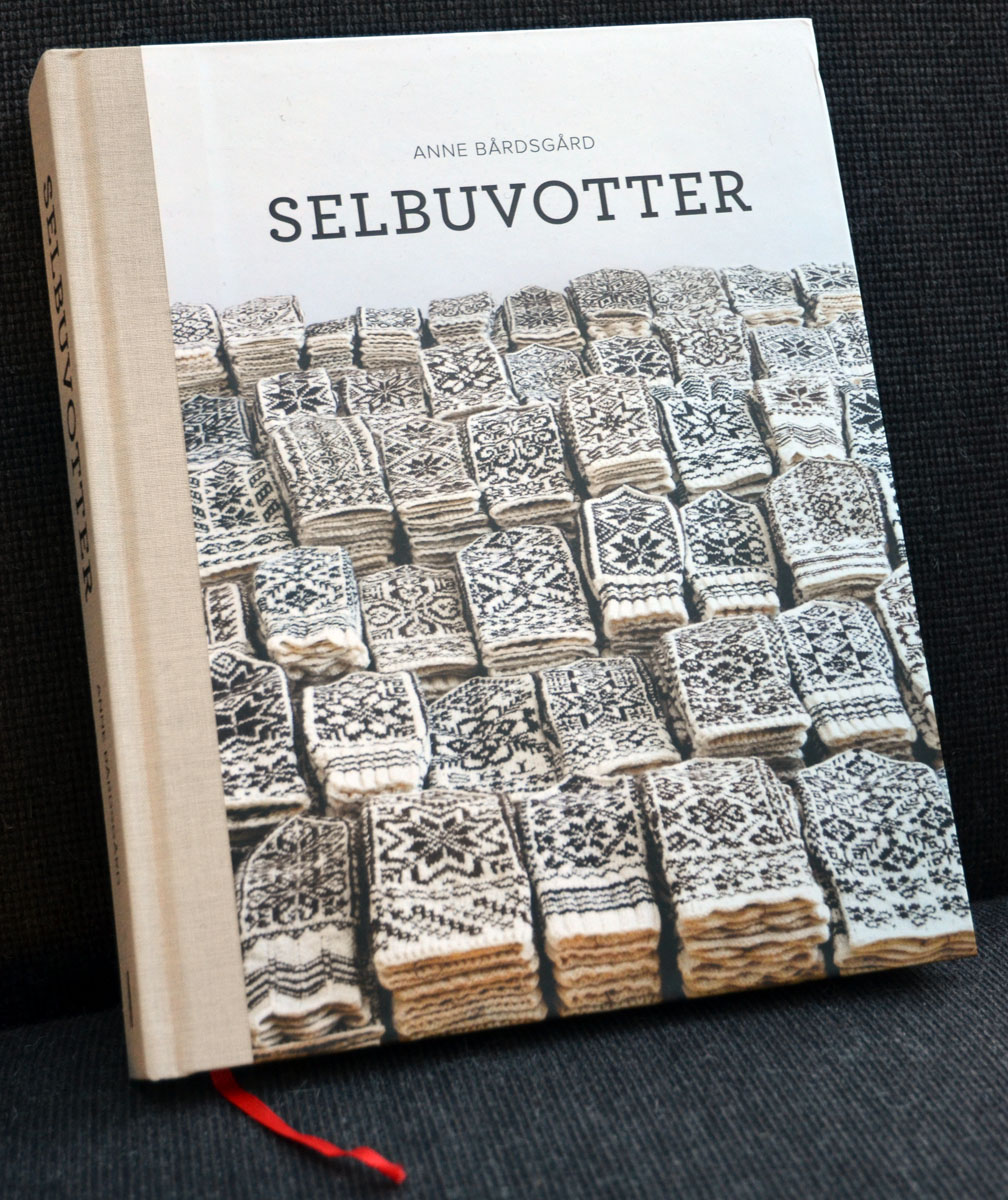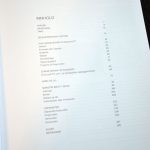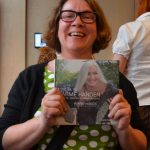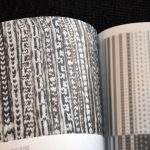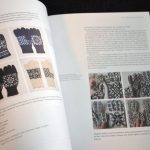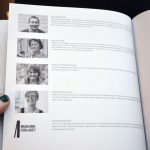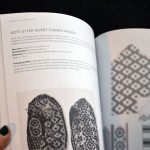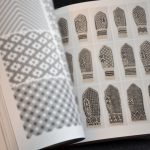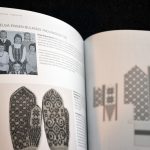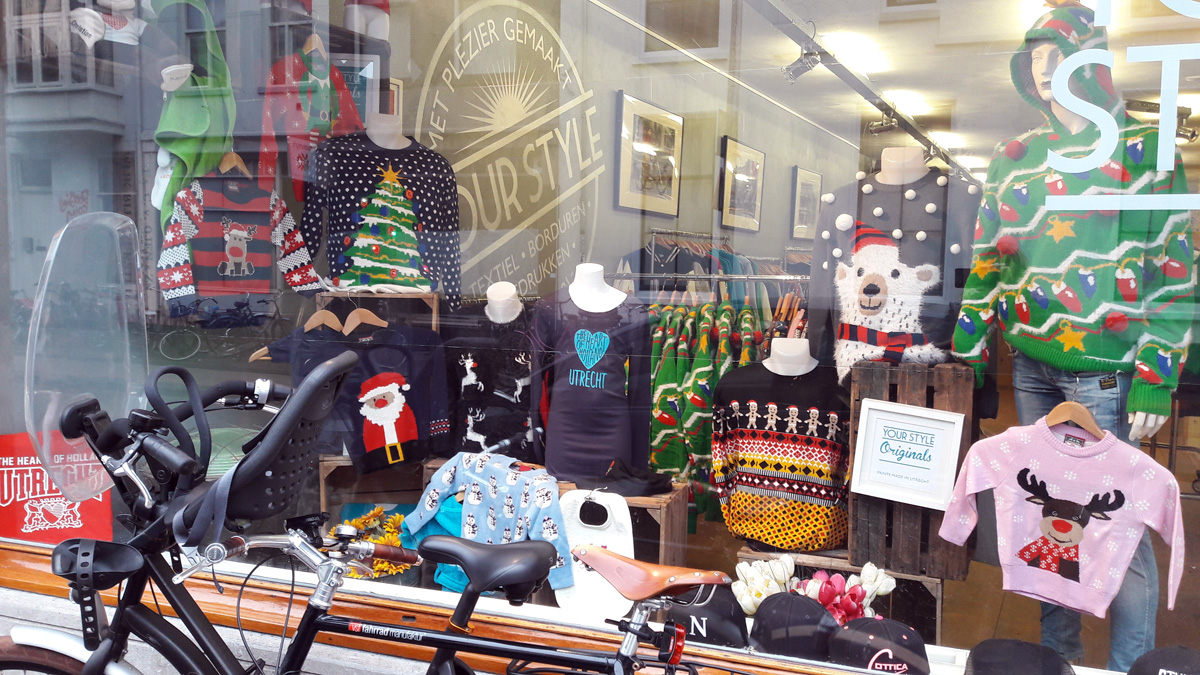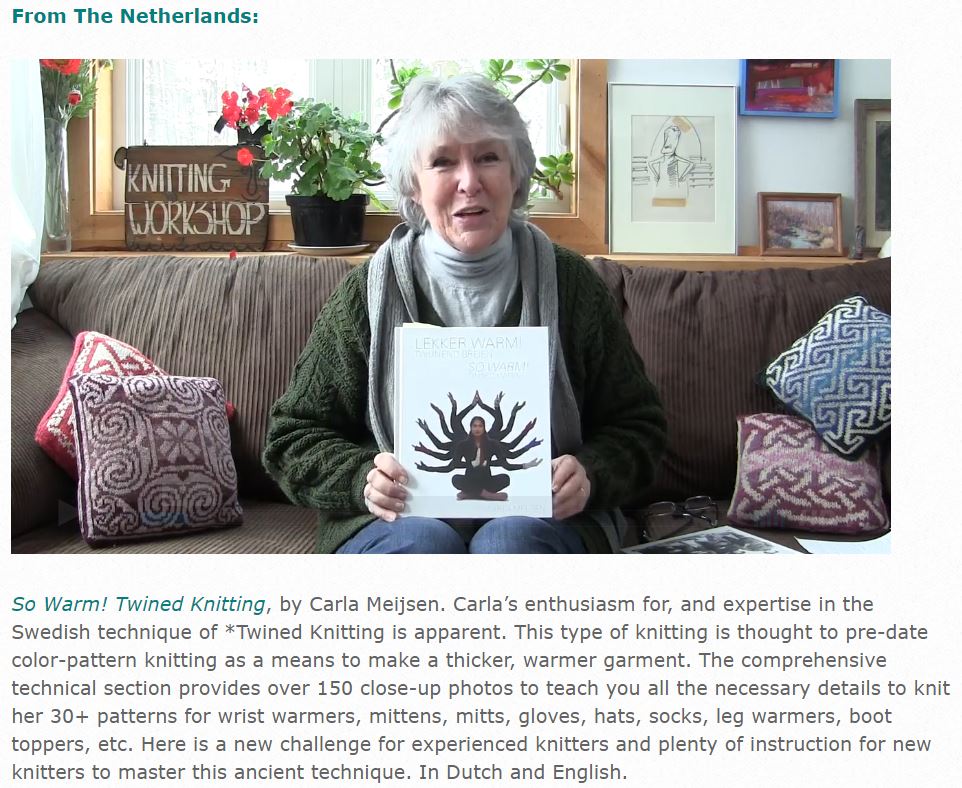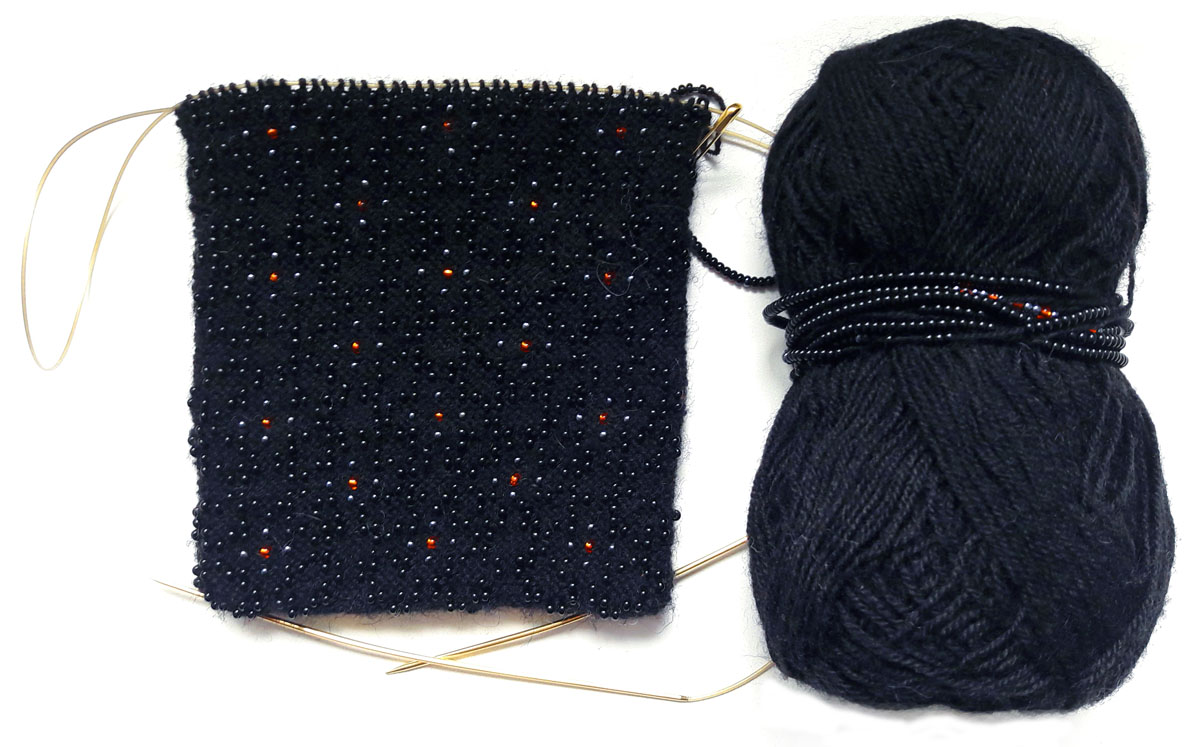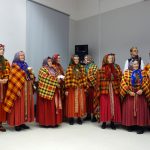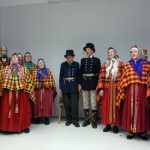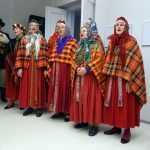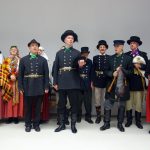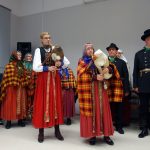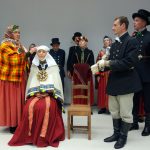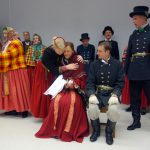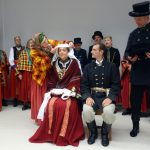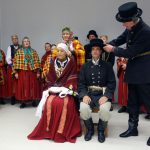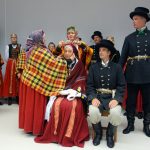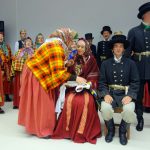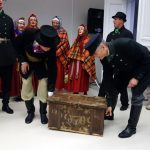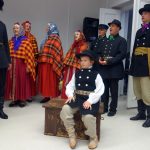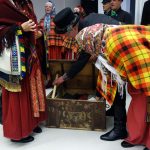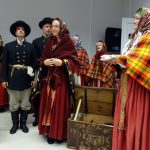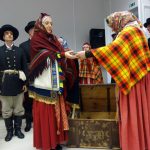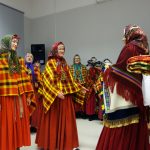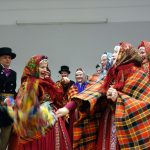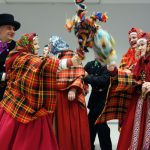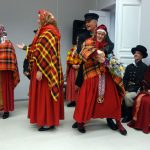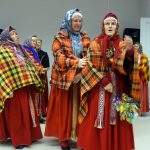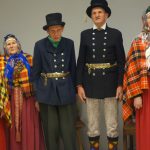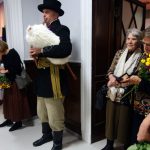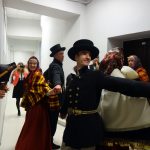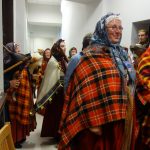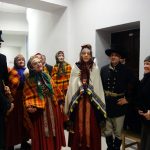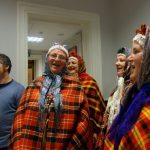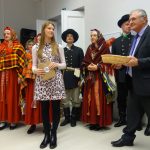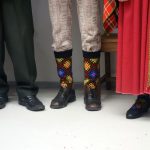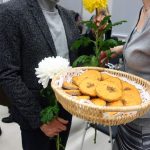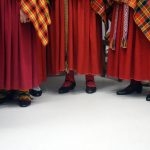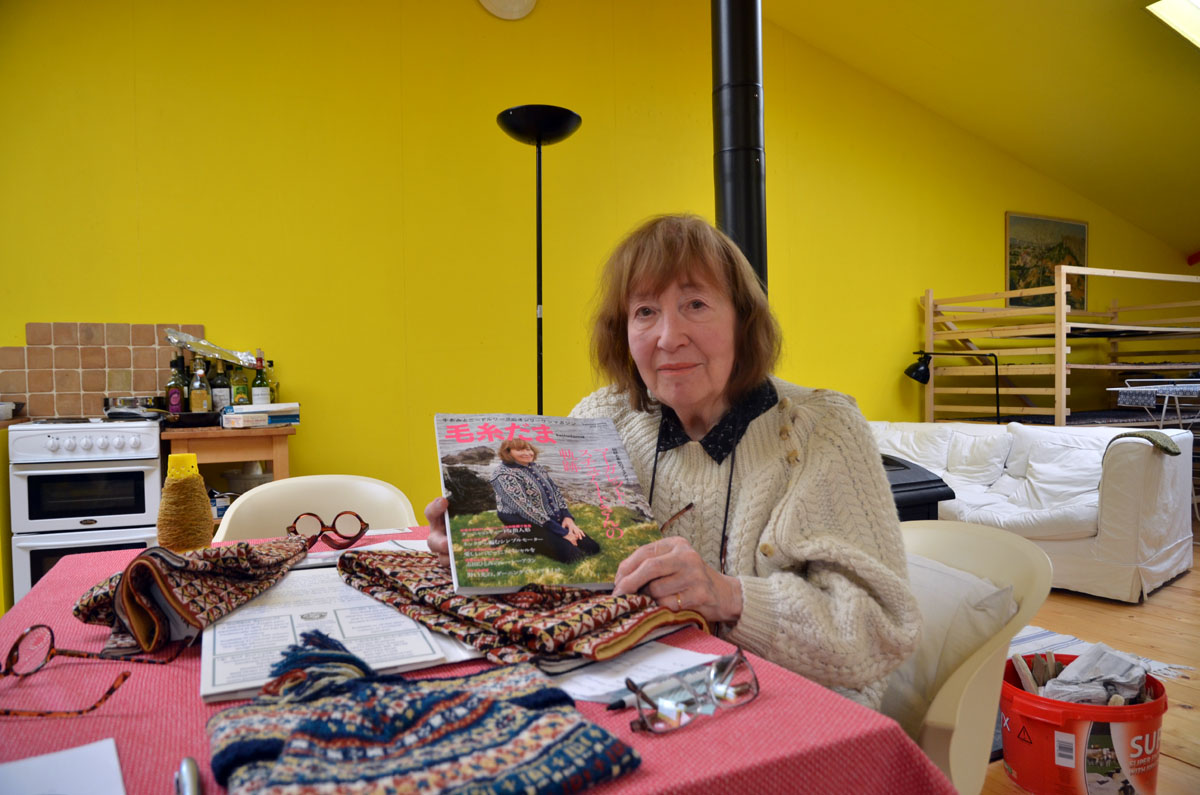
Het hoogtepunt van mijn reis van vijf weken naar Shetland waren de ontmoetingen met een hele bijzondere vrouw. Margaret Stuart heeft haar sporen verdiend als ontwerpster van breiwerk, maar was ook als mens geweldig om te leren kennen. Jan en ik hadden maar liefst drie ontmoetingen met haar, waarbij we veel leerden over haar werk als ontwerpster van breiwerk, inzichten, creatieve familie, leven en carrière.
The highlight of my five-week trip to Shetland was meeting a very special woman. Margaret Stuart has earned her traces as a designer of knitwear, but it was also so nice to get to know her as a person. Jan and I had as many as three meetings with her, learning a lot about her work as a knitwear designer, insights, creative family, life and career.
De eerste ontmoeting vond plaats in het atelier van Mary Macgregor in de buurt van Sandness. In de vrolijk geel geschilderde ruimte, die met een echte turfkachel warm werd gestookt, dronken we koffie en spraken we over breien. Mary is de eigenaar van BAKKA. Ze verwerkt traditionele motieven uit de Shetse Fair Isle breitradities in luxe shawls en andere artikelen van zachte merinowol. Rekken vol prachtig breiwerk waren opgesteld in het atelier, waar ze de afwerking doet van de in Lerwick op de machine gebreide artikelen. Perfectie tot in het kleinste detail. Op diverse plaatsen, zoals de Tourist Information in Lerwick, kan je deze breiwerken kopen. Er hangt wel een prijskaartje aan, maar jemig, dan hèb je ook wat!
The first meeting took place in Mary Macgregor’s studio near Sandness. In the cheerfully yellow painted space, which was heated with a real peat stove, we drank coffee and talked about knitting. Mary is the owner of BAKKA. She uses traditional motifs from the Shetse Fair Isle knitting traditions to design luxury shawls and other items of soft merino wool. Racks filled with beautiful knitted items were exhibited in the studio, where she does the finishing touch of the machine knitted items, which is done in Lerwick. Perfection to the smallest detail. In various places, such as the Tourist Information office in Lerwick, you can buy the knitwear. They do have a price tag, but well, they are more as worth it!
 |
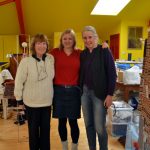 |
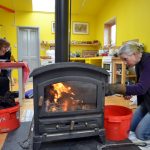 |
| Klik op afbeelding voor vergroting – Click to enlarge images |
Verleden jaar zagen we bij Harbour Knitwear in Scalloway al een aantal mappen met werk van Margaret, die eigenares Rosemarie recentelijk had gekocht op een veiling. Bij Mary liet Margaret Jan en mij nog meer mappen met voorbeelden uit haar persoonlijke collectie zien. Maar thuis had ze nog meer, vertelde ze en ze nodigde ons uit om alles ter plekke in Lerwick te komen bekijken. Met Jan sprak ze ook nog af in het Shetland museum, waar ze urenlang hebben gepraat over de collectie, iconen en meer. Samen met Titia ging ik naar Margaret’s huis in Lerwick, waar ons een warm welkom wachtte. Het was een geweldige ontmoeting waar ook Titia diep van onder de indruk was en die we voor geen geld hadden willen missen. De kans om deze grande dame van de breiwereld te ontmoeten en zo uitvoerig in een kleine setting met haar te praten, grijp je natuurlijk met beiden handen aan!
Last year we saw at Harbor Knitwear in Scalloway a number of folders with Margaret’s work, which owner Rosemarie had recently bought at an auction. At Mary’s workshop, Margaret showed Jan and me more folders with samples from her personal collection. But at home she had more, she told us and she invited us to see everything in her house in Lerwick. With Jan, they also spoke in the Shetland museum, where they talked for hours and more about the museum collection, icons and more. Together with Titia, I went to Margaret’s house in Lerwick, where we warmly welcomed. It was a meeting that made deep impression on Titia and that we would not have wanted to miss for the world. The chance to meet this grande dame of the knitting world and talk to her in a small setting, was of course, a chance of a life time!
Weet je nog, de jaren zeventig met de opkomst van Mary Quant en andere jonge hippe ontwerpers? En kan je ze nog voor je halen, het kleurrijke regenboogbreiwerk die je in de modebladen zag? Ik weet het nog en zag die shawl, muts en handschoenen met kleurrijke streepjes zo voor me. Destijds heel vernieuwend, waardoor ze ook in het Shetland museum een plaatsje veroverden. Bij Margaret mochten we de originelen bekijken, aanraken en fotograferen. Zó bijzonder!
Do you still remember the seventies with the rise of Mary Quant and other young hip designers? And do you remember the colorful rainbow knitwear that you saw in th e fashion magazines? I still have memories of that shawl, hat and gloves with colorful stripes. At the time it was very innovative, which allowed them to conquer a place in the Shetland museum. Margaret allowed to us to view, touch and photograph the originals. So special!
Margaret heeft verleden jaar een forse bijdrage geleverd aan Keito Dama 2016 winter, het bekende Japanse tijdschrift over breien en handwerken. Ze prijkt op de voorpagina in een vestje naar eigen ontwerp met op de achtergrond het Shetse landschap en vulde een compleet hoofdstuk met breiontwerpen. Je snapt, na het zien van het tijdschrift, de originelen in handen te hebben gehad en de verhalen achter de modellen te hebben gehoord, werd dezelfde dag het tijdschrift besteld!
Last year Margaret made a major contribution to Keito Dama 2016 winter, the well-known Japanese magazine on knitting and handicrafts. She is on the cover in a vest by her own design with as a background the Shetlandic landscape. A complete chapter is filled with knitting designs. You can imaging, after seeing the magazine, touching the original designs and hearing the stories behind the design of the designs, the magazine was ordered the same day!
Lieve Margaret, dank je wel voor het gastvrij onthaal, we hopen je volgend jaar weer te ontmoeten!
Dear Margaret, thank you for your warm welcome, we hope to meet you again next year!
